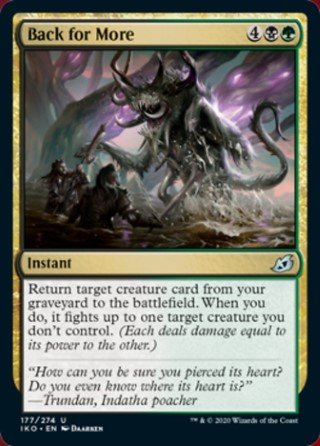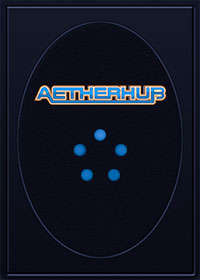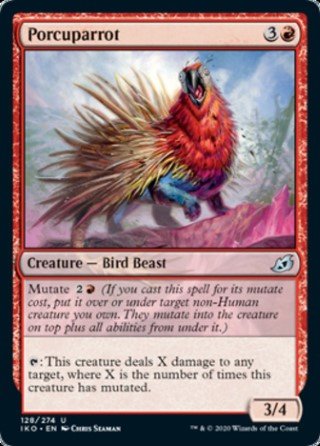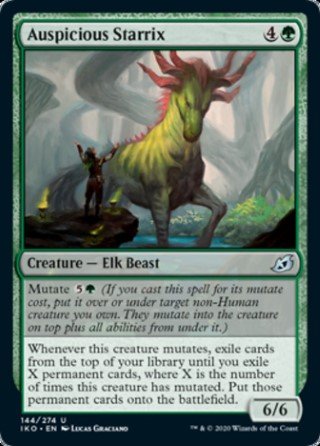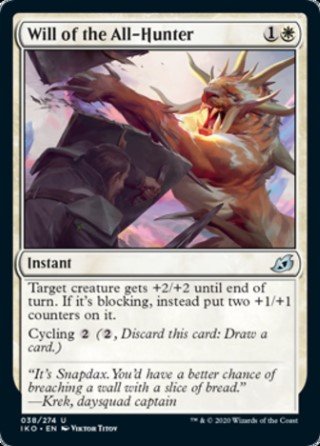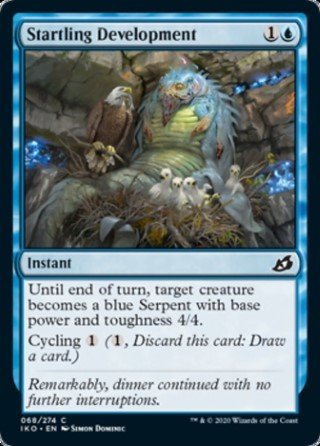Ikoria Limited Strategy Part 2: Aggro-archetypes!
"We are all that stands between civilization and savagery". The words bounce around my skull like an echo in a cave. Our general spat out such mantras as if he had a list in his pocket. He likely did. But, while each groan-worthy platitude was stale in the day-to-day, today was no ordinary day. No training 'bout in the yard. No series of menial chores. We stood side by side, spears in hand, lining and lighting the entire parapet. Some of the troops were shaking. I was one of them. It was hard not to, considering the towering silhouette on the horizon. A few yards nearer, and it'd blot out the sun. The only light left to us would be the glow of the crystals on our armor. With each step closer to Drannith, the beast's approach seemed to energize the crystals, and in turn, our spirits. "They'll shine like a beacon in the night". The general's words again.
This is what our training, the grueling drills under an unforgiving sun, was meant for. Harden us for this moment. Prepare us for the day one of the nigh-mythical monsters decided to test their claws against our steel. In a few rumbled minutes, the visitor would be at our doorstep. And we'd be there to greet him. It.
"They've no intelligent thought in their heads. No notion of mercy or compassion. They know only survival and supremacy." Kudro's distain bled over the words and soaked them in twisted sort of resolve. Whether or not they were true, be this monstrosity a killing machine or simple animal, was of little importance in this moment.
It roars. We roar back. A single titanic bellow against an ocean of battle cries. One mouthful of teeth against a sea of spears.
In our last adventure, we began our exploration of Ikoria Limited with a big-picture approach. A numbers game, assessing the viability of aggressive decks on the basis of average creature stats and quantity across colors. First impressions suggested a slower format, but we've not yet seen the whole story. Formats cannot be truly understood until the cards are allowed to interact, intermingle, and reveal functional detail. Sometimes, what looks apparent on paper (literally!) winds up being completely different in practice. And so, we're back!
Here's Johnny!
And Timmy. And Spike.
I've only a handful of drafts under my belt, so the sample size is admittedly small, but the events have given me a good feel for how the cards operate and whereabouts they fall. Though this is still mainly a first-impression, and likely to change as the format matures, it'll provide us a solid launch pad to figure out what aggressive decks work and in what circumstances.
Naturally, I'll be zeroing in on the Commons and Uncommons. Higher rarities are like finding a twenty dollar bill in your jeans pocket. It's wonderful when it happens, but far from a normal occurrence. And half the time, the money's already been through the wash and reduced to pulp before you find it. I suppose that's the Magical equivalent of when your opponent drops a Ruinous Ultimatum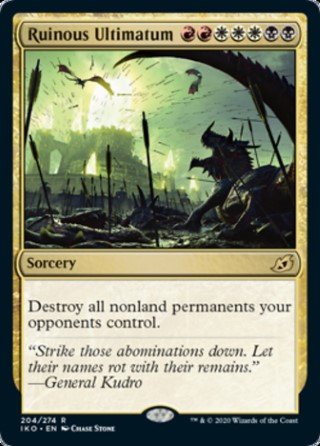 .
.
No $20 for you!
Strategy 1: White/Black Humans
Humans are Ikoria's resident go-wide strategy, aiming to produce an army of 1/1 Humans and playing up the Tribal advantage for all it's worth.
The Payoffs:
Humans possess some mighty payoffs that are mercifully easy to come by. Dire Tactics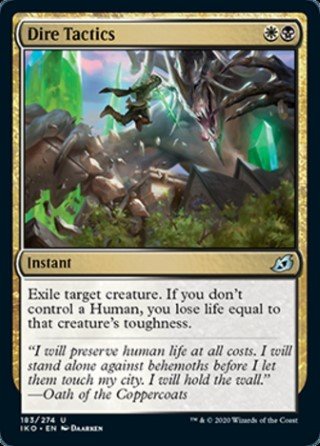 is nigh-always a better Terminate
is nigh-always a better Terminate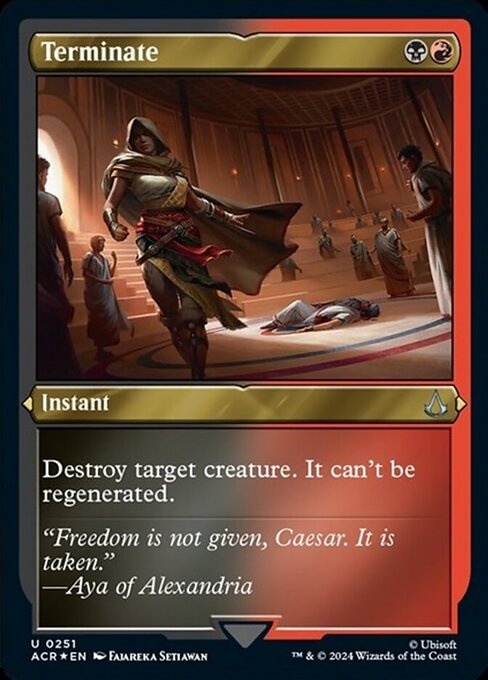 in this format. It has so far cost me three life. Once. A Human was present all other times I've cast it. The card runs at instant speed, lacks targeting restriction, and even exiles, culminating in a excellent piece of firepower. Backing that up is some of the best removal in the format: Heartless Act
in this format. It has so far cost me three life. Once. A Human was present all other times I've cast it. The card runs at instant speed, lacks targeting restriction, and even exiles, culminating in a excellent piece of firepower. Backing that up is some of the best removal in the format: Heartless Act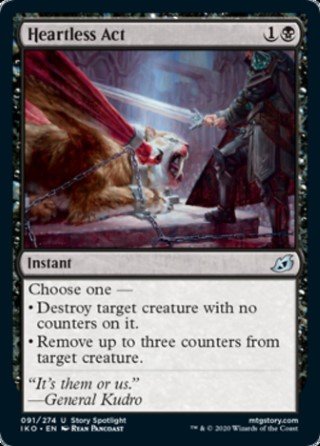 , Blood Curdle
, Blood Curdle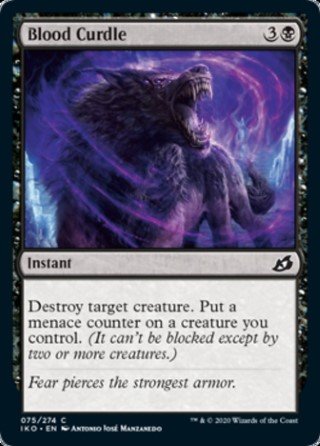 , and Pacifism
, and Pacifism .
.
Also impressive is Sanctuary Lockdown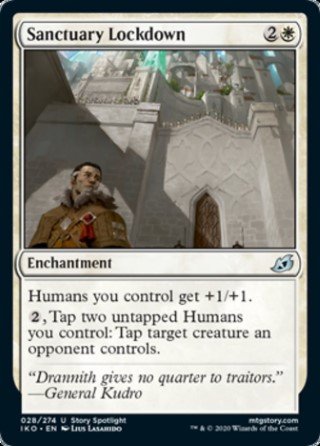 , an (albeit Tribal) Glorious Anthem
, an (albeit Tribal) Glorious Anthem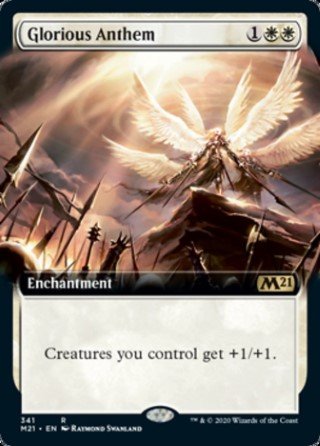 at uncommon that comes with a bonus. True, you may run a few nonhumans who miss the benefit, but Humans oughta make up >90% of your creatures. There is a tremendous jump from a 1/1 Human token to a 2/2 Human token. This would make Sanctuary Lockdown
at uncommon that comes with a bonus. True, you may run a few nonhumans who miss the benefit, but Humans oughta make up >90% of your creatures. There is a tremendous jump from a 1/1 Human token to a 2/2 Human token. This would make Sanctuary Lockdown strong enough to be playable on its own, but yee cardboard gods added even more to it. A gift to aggro players, the enchantment can close out the game by enabling a tapdown, locking opposing defenders at the end of turn and setting up the alpha strike.
strong enough to be playable on its own, but yee cardboard gods added even more to it. A gift to aggro players, the enchantment can close out the game by enabling a tapdown, locking opposing defenders at the end of turn and setting up the alpha strike.
It's worth noting that even the official Human deck of the format is likely to run a few non-humans. There's just so damn many of them, and their effects can be quite useful, despite seemingly contrasting with the Tribal synergy. Regal Leosaur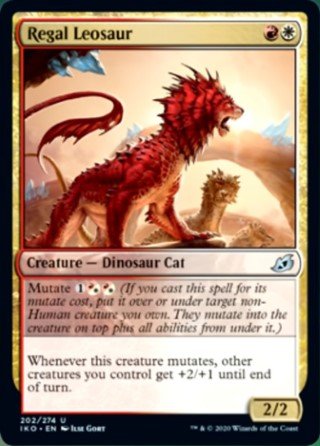 requires another non-Human to mutate onto, but it's mass-pump, potentially repeatable, is just what a go-wide deck is looking for. And many of the Humans are lower in casting cost, so you're very likely gain value out of Necropanther
requires another non-Human to mutate onto, but it's mass-pump, potentially repeatable, is just what a go-wide deck is looking for. And many of the Humans are lower in casting cost, so you're very likely gain value out of Necropanther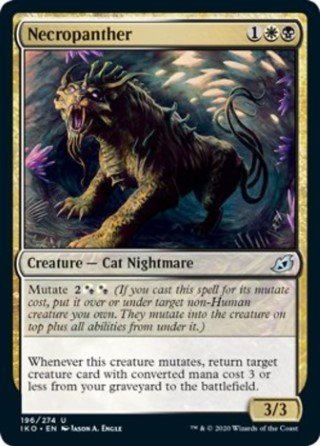 .
.
The Bread and Butter:
Our primary mission is to spend early turns assembling an army. As such, the archetype's workhorses are Nightsquad Commando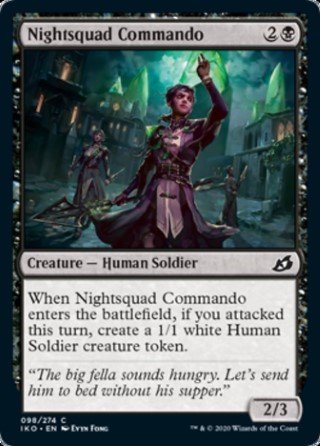 and Daysquad Marshal
and Daysquad Marshal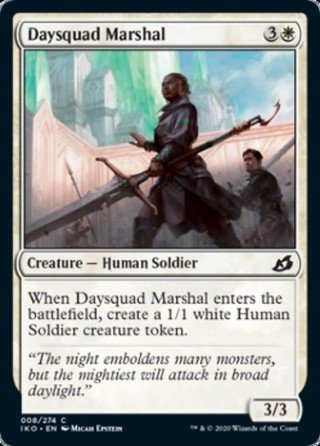 . The bonus both provide seems small, but it's the sorta innocuous value that'll take the game over time. Back in Khans of Tarkir, Mardu Hordechief
. The bonus both provide seems small, but it's the sorta innocuous value that'll take the game over time. Back in Khans of Tarkir, Mardu Hordechief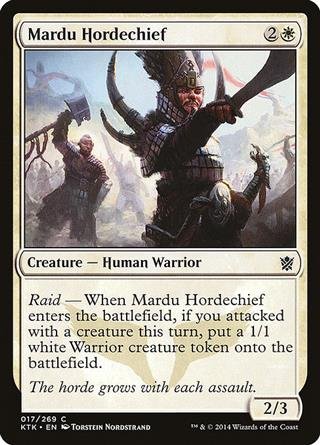 served a similar purpose to great effect, and Nightsquad Commando
served a similar purpose to great effect, and Nightsquad Commando is literally just a color-shifted version. I highly, highly recommend you swing in with a 2-drop in order to enable that token production. There are enough tricks in the set that I doubt someone will trade their own 2-drop for your attacking Drannith Healer
is literally just a color-shifted version. I highly, highly recommend you swing in with a 2-drop in order to enable that token production. There are enough tricks in the set that I doubt someone will trade their own 2-drop for your attacking Drannith Healer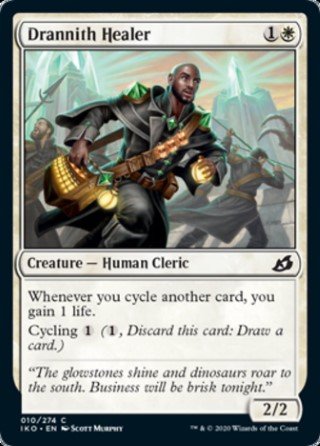 that early. While Daysquad Marshall seems like an overcosted Hill Giant
that early. While Daysquad Marshall seems like an overcosted Hill Giant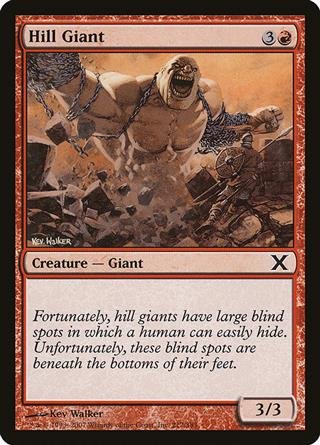 on the surface, in practice it's more like a Call the Calvary. You're getting your 4-power for 4-mana.
on the surface, in practice it's more like a Call the Calvary. You're getting your 4-power for 4-mana.
General's Enforcer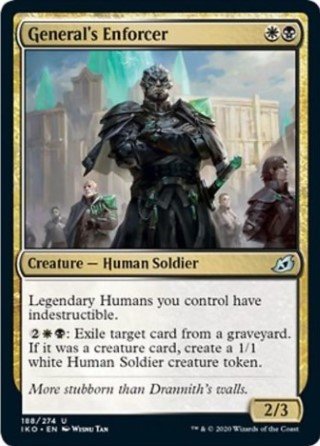 , while I wouldn't put on the same power level as Dire Tactics
, while I wouldn't put on the same power level as Dire Tactics and Sanctuary Lockdown
and Sanctuary Lockdown , isn't too far off. It's got an efficient body for the cost, but it's more a late-game safety net than early threat. The ability to nix graveyards and make 1/1's is pricey, but repeatable, making it a nice mana sink for later. Ideally, you'll be building an army in preparation for the alpha strike, but those 1/1's can make good chump blockers if the pressure is really coming down on you. And yea, you can essentially ignore the first ability, though points for flavor if you do manage to run him alongside General Kudro of Drannith
, isn't too far off. It's got an efficient body for the cost, but it's more a late-game safety net than early threat. The ability to nix graveyards and make 1/1's is pricey, but repeatable, making it a nice mana sink for later. Ideally, you'll be building an army in preparation for the alpha strike, but those 1/1's can make good chump blockers if the pressure is really coming down on you. And yea, you can essentially ignore the first ability, though points for flavor if you do manage to run him alongside General Kudro of Drannith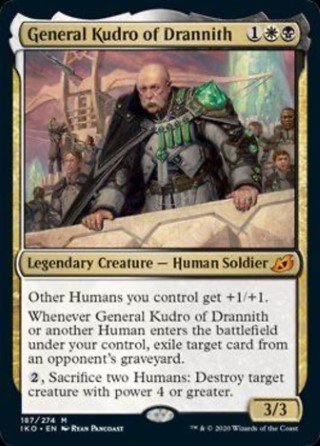 .
.
Many formats have 3/2's for three mana, and while they're adequate-if-unspectaculor in many decks, I've never seen one so vitally important to an archetype than Perimeter Sergeant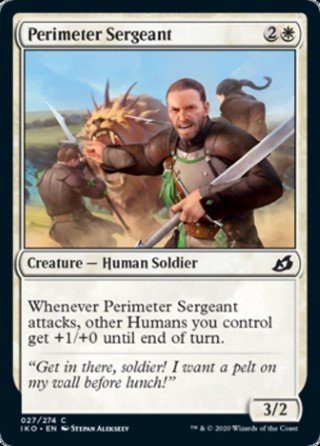 . Though fragile, they are a key element to making the deck work. You'll want as many as you can get. In multiples, the damage stacks up very quickly. Speaking of mass-pump, you'll also be on the lookout for a Coordinated Charge
. Though fragile, they are a key element to making the deck work. You'll want as many as you can get. In multiples, the damage stacks up very quickly. Speaking of mass-pump, you'll also be on the lookout for a Coordinated Charge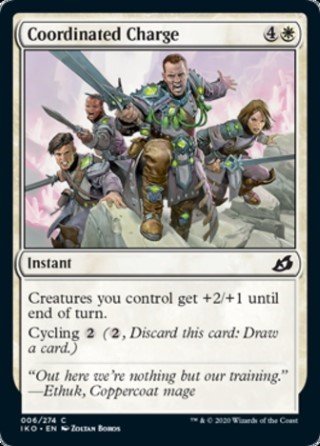 to close things out. Don't be afraid to cycle it early on in the pursuit of army-building. That's gotta take priority here.
to close things out. Don't be afraid to cycle it early on in the pursuit of army-building. That's gotta take priority here.
The Challenges:
It's less the overall size of a given creature your opponent throws down as it is their ability to match your army-generation. Your strategy hinges on outpacing your opponent on quantity rather than quality. Their 6/6 won't matter once you pump a massive team up to 3+ power.
The issue is when they can match your growth with their own. To offset the Aura-like nature of Mutate, many, many of the set's mutate creatures come with built-in card advantage. These can prevent you from ever getting the numbers edge you'll desperately need, as they'll overtake the 1-for-1 nature of your removal, efficient as it may be. Blowing up a big mutated creature is fine, but you're not getting card advantage outta the deal if they've made a bunch of 3/3's via Trumpeting Gnarr or recycled removal via Lore Drakkis
or recycled removal via Lore Drakkis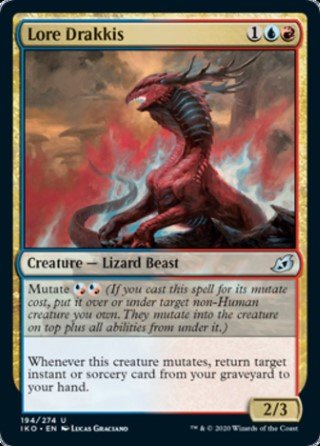 first. A faster deck might not care as much, but you're looking to end things in one or two big swings, and that takes time.
first. A faster deck might not care as much, but you're looking to end things in one or two big swings, and that takes time.
My Takeaway: Be very mindful with your removal, and focus on using it more to remove potential mid-game blockers, especially if they're actively generating card advantage, than to axe a massive threat. Once the larger threats begin showing up, you'll want your opponent hurt enough to prepare the final strike. If they've halted your attempts along the way, it's likely you'll be overrun before you're able to finish things off.
Strategy 2: W/R (Sometimes with a dash of Blue) Cycling-Matters
This is an interesting departure from the normally-belligerent Boros. They're still plenty rowdy, only now with a side of environmental consciousness. How else to explain all the card recycling?!
White/Red looks to combine early, aggressive creatures with added value of inexpensive Cycling outlets and payoffs. It's a bit of a tonal switch, as Boros usually looks to go-wide and Orzhov seeks to grind em' out and bleed em' dry. Ikoria paints the opposite.
The Payoffs:
The interesting thing about this archetype is the duality-factor. We're interested both in efficient, aggressive bodies and card-advantage Cycling triggers. Simultaneously! That seems a tall order, though Ikroia handily steps up to the plate. Savai Thundermane and Valiant Rescuer
and Valiant Rescuer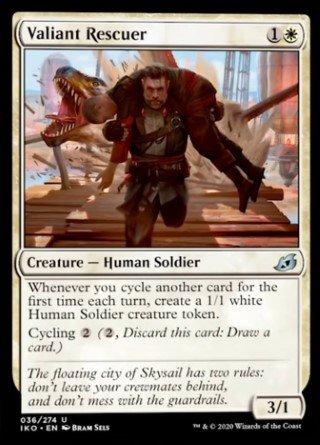 are key examples, both coming down early for hefty damage, then providing tons of value as the game progresses. That combination is what allows the deck to tick as the game goes on and larger threats begin appearing on the other side of the board.
are key examples, both coming down early for hefty damage, then providing tons of value as the game progresses. That combination is what allows the deck to tick as the game goes on and larger threats begin appearing on the other side of the board.
Bear in mind that your payoffs are only as good as your ability to "feed" them. Turn-1 Flourishing Fox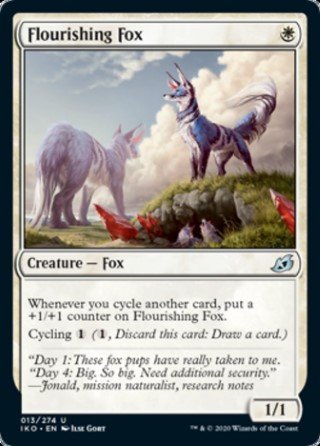 is potentially scary. But not without backup. And that certainly holds true for Reptilian Reflection
is potentially scary. But not without backup. And that certainly holds true for Reptilian Reflection ! You'll need to prioritize Cycling just as highly as aggressive critters. This is probably why so many already-playable cards (Raking Claws
! You'll need to prioritize Cycling just as highly as aggressive critters. This is probably why so many already-playable cards (Raking Claws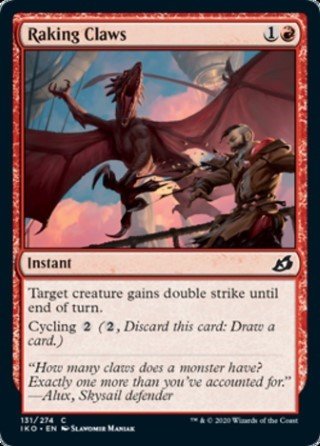 , Go for Blood
, Go for Blood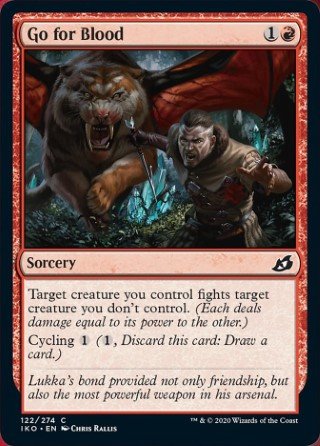 , Drannith Healer
, Drannith Healer ) have Cycling stapled right onto them.
) have Cycling stapled right onto them.
No card better illustrates this need better than Zenith Flare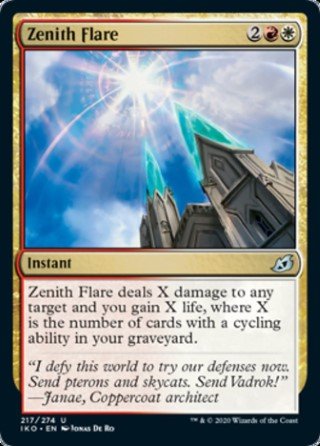 . In an ideal world, the card is your finisher. But man, it can a lot work to get there. Nine times out of ten, you'd much rather have Warleader's Helix
. In an ideal world, the card is your finisher. But man, it can a lot work to get there. Nine times out of ten, you'd much rather have Warleader's Helix . Be prepared for this card to work as an overcosted Lightening Helix much of the time, but with the potential ceiling to shine if the game goes long. One hidden benefit is that your dead creatures with Cycling boost it up just as much as your Cycled-away spells, so chump blocking in the late game can actually enhance Zenith Flare
. Be prepared for this card to work as an overcosted Lightening Helix much of the time, but with the potential ceiling to shine if the game goes long. One hidden benefit is that your dead creatures with Cycling boost it up just as much as your Cycled-away spells, so chump blocking in the late game can actually enhance Zenith Flare . I'm not the biggest fan, but I'm happy to run one or two. Just know that it's not the clean-cut removal it appears.
. I'm not the biggest fan, but I'm happy to run one or two. Just know that it's not the clean-cut removal it appears.
The Bread and Butter:
Drannith Stinger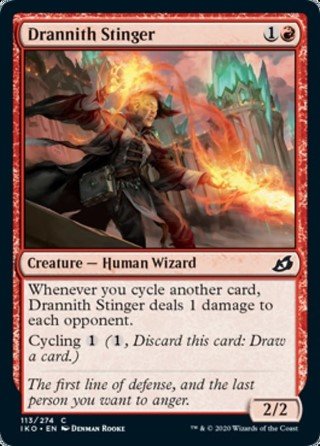 and Prickly Marmoset
and Prickly Marmoset are essential pickups, as both represent extra-added damage when you're firing on all cylinders. That damage is key towards chipping away at the opponent, so even though it only seems like an extra point or two, don't underestimate how quickly it'll add up. I'm less enthusiastic about Drannith Healer
are essential pickups, as both represent extra-added damage when you're firing on all cylinders. That damage is key towards chipping away at the opponent, so even though it only seems like an extra point or two, don't underestimate how quickly it'll add up. I'm less enthusiastic about Drannith Healer , as lifegain is nowhere near as important. But he's still a perfectly fine Grizzly Bears
, as lifegain is nowhere near as important. But he's still a perfectly fine Grizzly Bears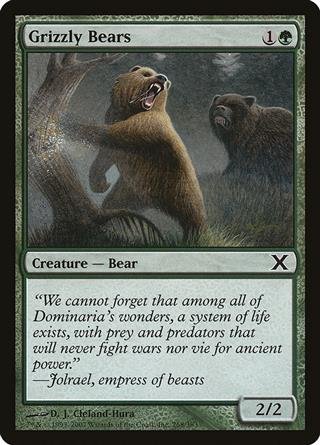 that fuels the Cycling-train. Certainly prioritize the Stinger over it, but don't be upset to run the Healer. I've also been impressed by Snare Tactician
that fuels the Cycling-train. Certainly prioritize the Stinger over it, but don't be upset to run the Healer. I've also been impressed by Snare Tactician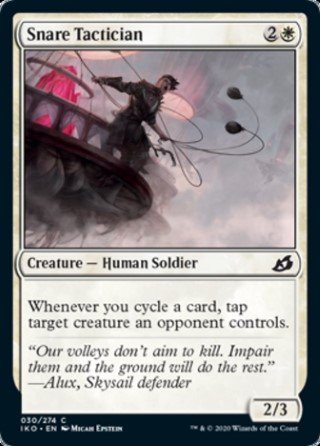 , who's ability to clear the way of blockers is much stronger than it first appears.
, who's ability to clear the way of blockers is much stronger than it first appears.
Funnily, for an aggressive deck, W/R is happy to run more expensive creatures like Rooting Moloch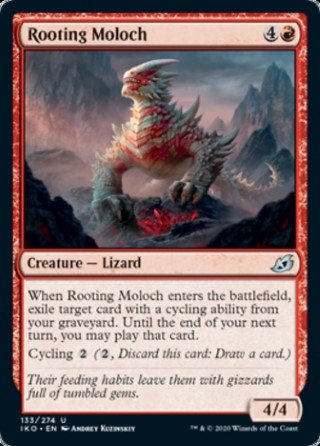 , Lava Serpent
, Lava Serpent , and Sanctuary Smasher
, and Sanctuary Smasher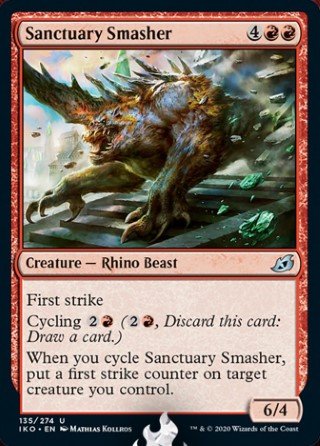 . That Cycling goes a long way. If you do find the game going long, you're more than happy to throw down a hasty 5/5 or recast something from your graveyard. I've actually been surprised how many opponent's weren't prepared for Lava Serpent
. That Cycling goes a long way. If you do find the game going long, you're more than happy to throw down a hasty 5/5 or recast something from your graveyard. I've actually been surprised how many opponent's weren't prepared for Lava Serpent and left themselves open. Make sure not to make this mistake!
and left themselves open. Make sure not to make this mistake!
Lastly, in classic Boros fashion, we've combat tricks for days. Cards like Spontaneously Flight and Heightened Reflexes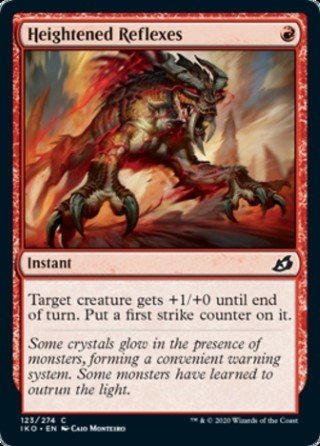 are serviceable, but we're more in the market for the ever-important Cycling inclusions. Don't be afraid to run sub-optimal cards like Go for Blood
are serviceable, but we're more in the market for the ever-important Cycling inclusions. Don't be afraid to run sub-optimal cards like Go for Blood (which is far more apt for Gruul or Rakdos decks than this one) or Imposing Vantasaur
(which is far more apt for Gruul or Rakdos decks than this one) or Imposing Vantasaur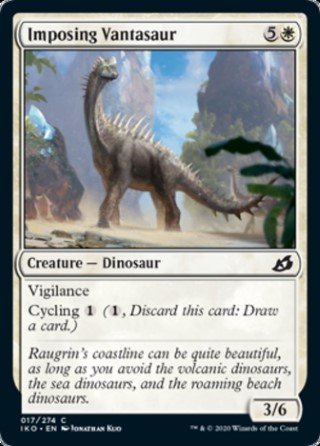 . The flexibility is the strength, here. Not the efficiency. More often than not, you'll cheaply cycle away that dinosaur for value. But sometimes, his big butt will save yours!
. The flexibility is the strength, here. Not the efficiency. More often than not, you'll cheaply cycle away that dinosaur for value. But sometimes, his big butt will save yours!
The Challenges:
Look familiar?
As I mentioned before with W/B, you're looking to generate as much value as possible per card cast (or Cycled). With Humans, it was about building the army. Here, it'll about squeezing all the value you can from your Cycling payoffs, chipping away at your foe until they're near enough dead to move in for the kill.
My Takeaway: You've two big obstacles to overcome. The first is listed above: big ole' value monsters that'll both slow you down and threaten your life. Remember, kids, to use that removal wisely. The second, and arguably more challenging, is finding that perfect balance between Cycling payoffs and enablers. Run too much of one and not enough of the other, and the deck won't be in sync. I'd recommend prioritizing the payoff cards first, as there's so damn much Cycling in the set you should be able to snag at least a few. Just remember that, even if someone's deck isn't Cycling-themed, the mechanic's flexible nature makes it appealing to everyone. Thus, there will be more competition for Cycling cards.
Next Steps: Outside-the-Box Aggro
Our next chapter will look further into the fringes of aggro strategies. While they're not as heavily-supported as the enemy color pairings, the allied-color pairings have some potential, as well.
Rakdos? Aggressive?! Who'd of thunk?
Thanks for reading and have a blast drafting this new set!
-Tautog-

